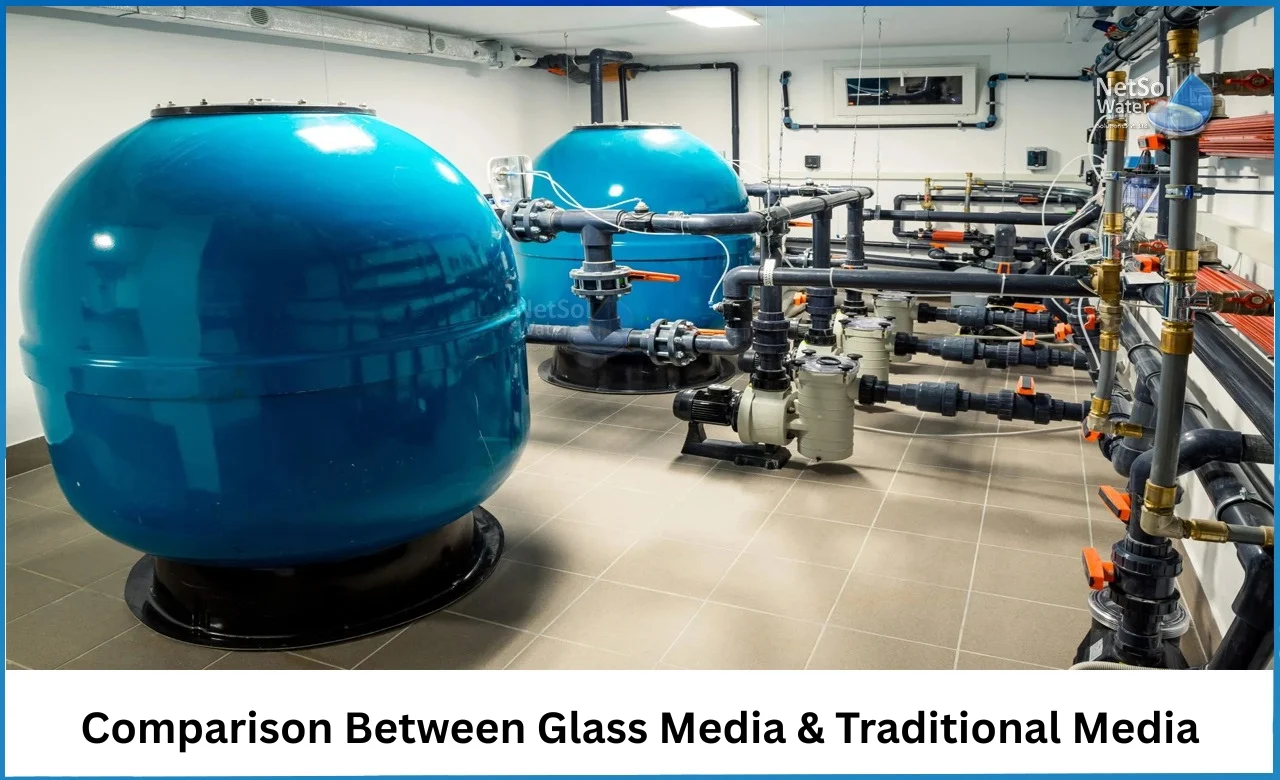
Comparison Between Glass Media & Traditional Media
Glass Media and Traditional Media have both served as filters in water treatment plants. Each plays a big role in cleaning water for homes and industries. People use Glass Media for its smooth surface and strict control over particle size. Meanwhile, Traditional Media uses layers of sand, gravel and anthracite to trap unwanted particles. In places known for water scarcity and heavy industry the choice of filter brings cost savings and cleaner output.
Glass Media
Understanding Glass Media matters when you aim for clear water with steady flow. Glass Media comes from crushed recycled glass. It gives uniform shapes that let water pass well. This media offers less channeling of flow or trapped dirt. Let us have a look on some key facets of this media
Composition and Structure
Glass Media forms from recycled glass crushed to specific sizes. Each grain shows smooth edges that cut down on dust build up. The uniform shape keeps water moving at a steady rate. It also gives a clean bed after backwash. In many cases users see lower waste water volume after cleaning the filter. Those features make Glass Media stand out compared to uneven grains in sand beds. Near coastal cities this media resists salt damage better than natural sands.
Mechanism of Action
Glass Media traps particles through sieving and depth filtration. The glass grain bed holds dirt in narrow gaps. When water flows down it leaves unwanted solids inside the bed. The media resists compaction and stays open through many cycles. After backwash, the glass grains separate and release trapped dust. This process gives quick recovery and longer run times. Maintenance teams praise the ease of cleaning and the bright appearance that signals fewer deposits.
Traditional Media
Exploring Traditional Media shows why it held ground for decades. People trust sand gravel and anthracite layers. This mix forms a slow filter that catches both big and small particles. In many small towns, operators favor this system because it costs less at start. Let us have a look on some main points of this media
Common Materials Used
Traditional Media uses layers of coarse sand or gravel at the bottom and finer sand on top. Anthracite often sits above the sand. The varied grain sizes create pockets that stop solid bits. Operators adjust layer thickness to match water quality. Where rivers feed plants with high turbidity workers add thicker fine sand. In areas with mild surface water they keep layers lean. This flexibility made Traditional Media a go to choice for early plants.
Operational Process
As water enters the filter it moves down through anthracite then sand and gravel. Each layer catches a certain particle range. The anthracite stops larger solids first. The fine sand takes tiny dust. Gravel holds the whole bed firm. Operators monitor pressure to detect clogging. When flow slows crews run backwash cycles. They reverse flow to lift grains and free dirt. Though simple this process takes more water to flush than with Glass Media.
Comparing Performance and Sustainability
Comparing Performance and Sustainability shows how each media handles efficiency and cost. Decision makers weigh clean water output and green footprint. Glass Media often wins on reuse of waste glass. Traditional Media scores on low initial cost and proven history. Let us have a look on some factors in this face off
Efficiency and Lifespan
Traditional Media works well when water has low dust content. It lasts years if operators keep up backwash routines. Yet after cycles the sand shapes deform and clog. That leads to shorter run times and more water waste in backwash. Glass Media keeps shape and holds flow longer. Plant teams report up to double run hours before a clean cycle.
Environmental Impact
Glass Media reuses postconsumer glass and cuts landfill waste. This choice meets green goals and local rules on recycling. It also avoids mining sand from river beds. When sand beds erode they harm fish habitats and weaken riverbanks. Traditional Media depends on those sand mines. Yet Glass Media needs energy in crushing and washing the glass. Plants must weigh that cost against the impact of sand mining. Still many operators see net benefit in switching to recycled glass.
Read some interesting information for Sewage Treatment Plant Manufacturers
Conclusion
Glass Media and Traditional Media each bring strengths to water treatment work. Glass Media offers steady flow life and green reuse of glass. Traditional Media brings low cost and simple proven layers. Your choice affects water quality and plant running cost. If you aim to use Glass Media or stick with Traditional Media get in touch for more details or a trial. Our team can guide you to pick the right media for your needs in Mumbai or beyond. Contact us today to learn how Glass Media and Traditional Media can meet your goals.
Phone: +91-965-060-8473
Email: enquiry@Netsolwater.com
